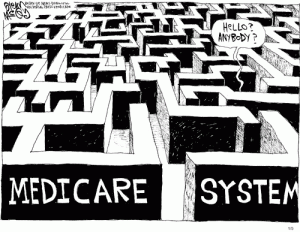In the past couple of weeks I have read stories and heard presentations that are diametrically opposed:
- On the one hand, some are saying that the pent up demand for senior housing is so huge that it is inconceivable that we could have a glut of inventory
- On the other hand, we need to be cautious because there are signs of overbuilding
While at the NIC Capital and Business Strategies Forum in San Diego last week this was a topic of discussion in several presentations and informally during networking sessions. The consensus seems to be that overall the market is strong and that demand is continuing to increase, although at a rather modest pace, but that it is likely that there will be some individual markets where in the short term there will be too much inventory.
State of the Marketplace
During the conference I got the chance to spend most of an hour with Imran Javaid, managing director at Capital One Bank, a Senior Housing Forum partner, chatting about how he sees the development marketplace. As we have shared before, Imran’s thoughts are fairly consistent with the other attendees at NIC. While there are likely some overbuilt areas, each opportunity must be looked at on its own merit. This means that even in a saturated metropolitan market area there could be localized pockets that represent great opportunities.
However, he also shared his thoughts on a potential wild card impacting the marketplace – the major increase in available capital. At this NIC conference around 40 percent of the attendees were capital providers (curiously there were more capital providers than consumers of capital). History tells us that as more and more money chases fewer and fewer high quality projects, some marginal projects will get funded and built.
The Importance of Expertise
Because of this trend, Imran stressed the importance for lenders to take a strategic, thoughtful approach when assessing potential projects. For example, more local community banks are jumping into the senior living financing arena where they may not have substantial expertise. In my experience, these are almost always relationship lending situations, where a local developer that has been doing multifamily, commercial or medical office buildings but has been hearing about how they can get better returns developing senior living.
Often they will own or have an eye on a parcel of land, pitch the project to the banker they golf with every month and they are off to the races. Along the way they will get an appraisal and feasibility study – but when ordering your own, it is not so tough to get the results you want.
It looks like a good deal for the bank because they can charge higher rates and everyone “knows” the population is aging making this a slam dunk opportunity. The challenge is that these local banks don’t have the expertise and ability to evaluate the quality of the investment in many cases.
In Imran’s view, the jury is still out as to how this issue will play out in the marketplace. At the end of the day, some will turn out to be okay investment decisions, but some problem projects seem inevitable.
Steve Moran










